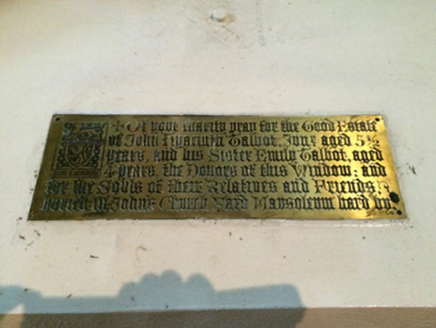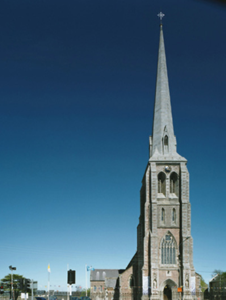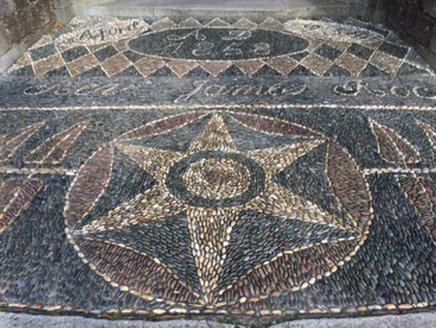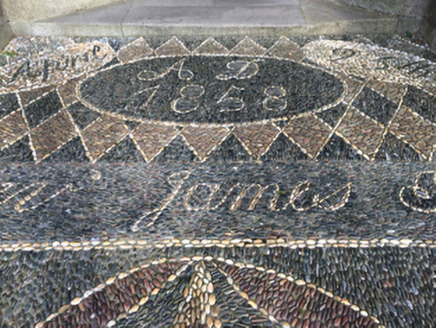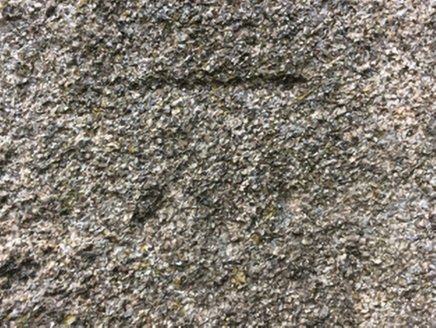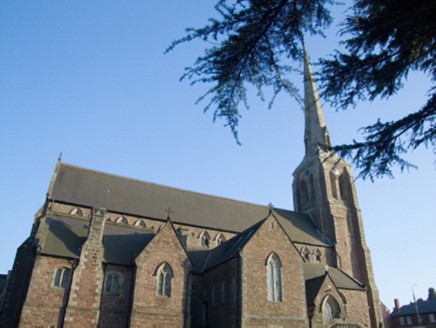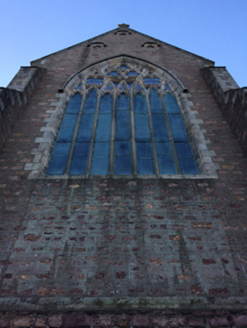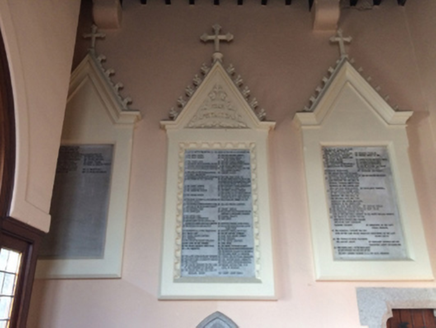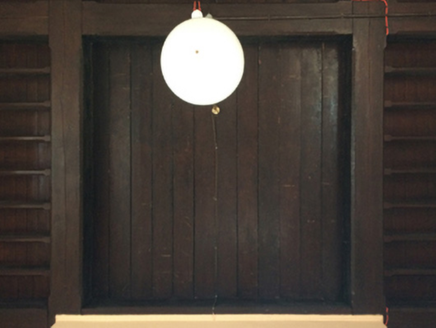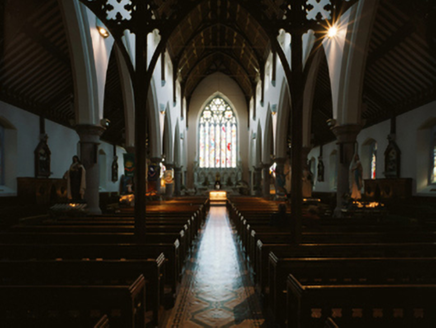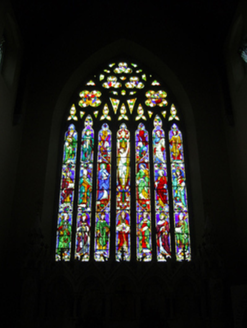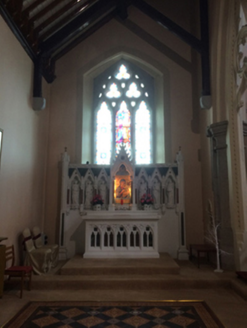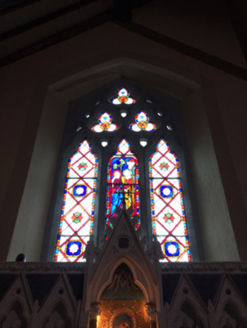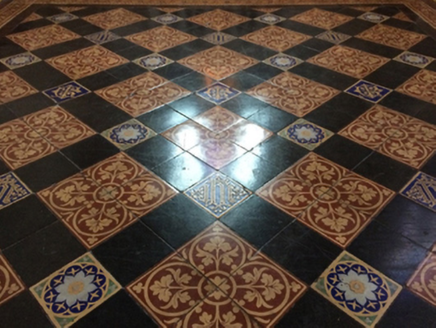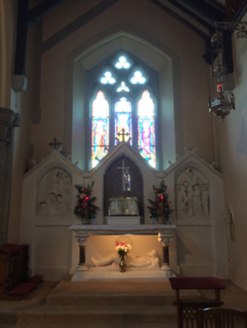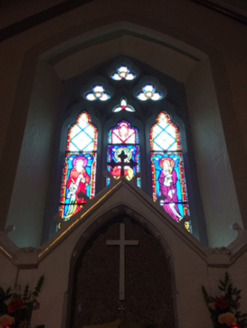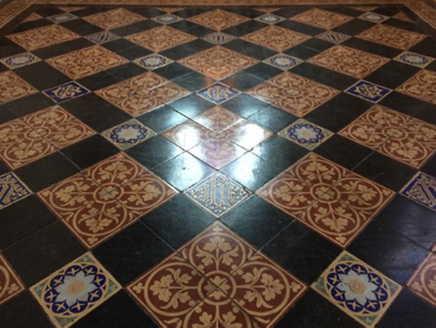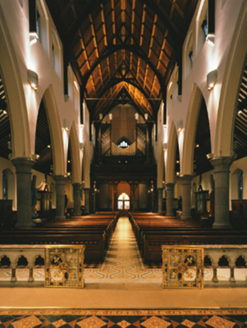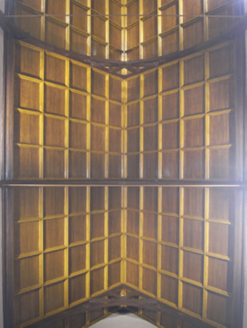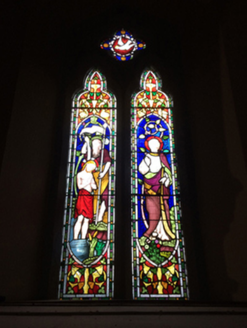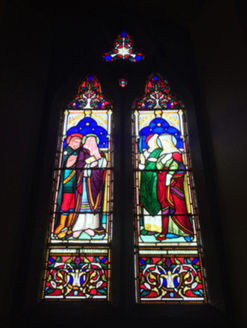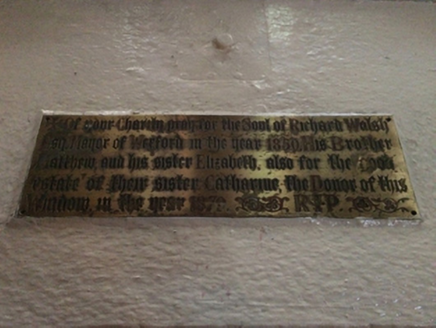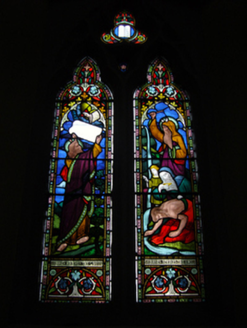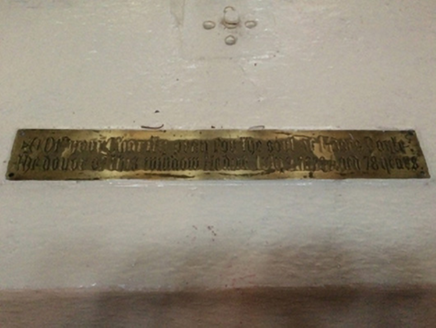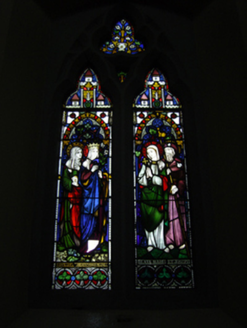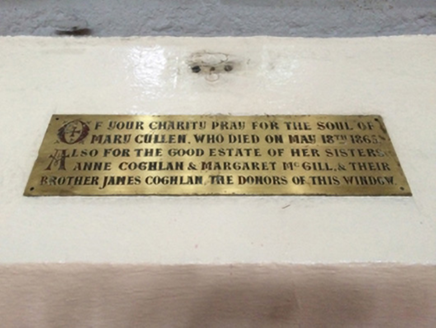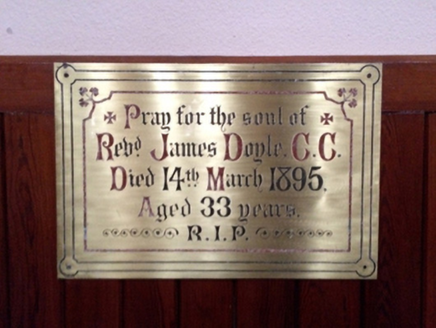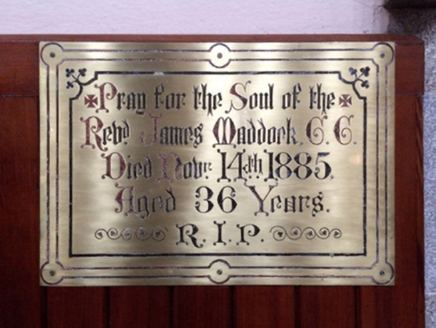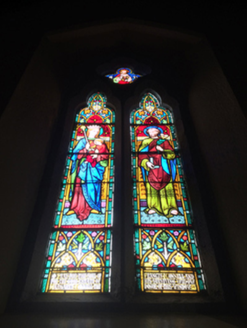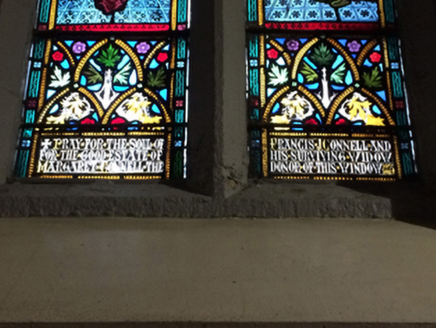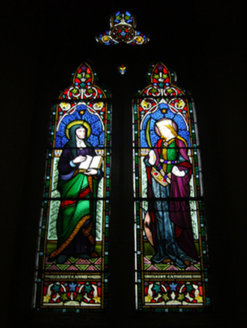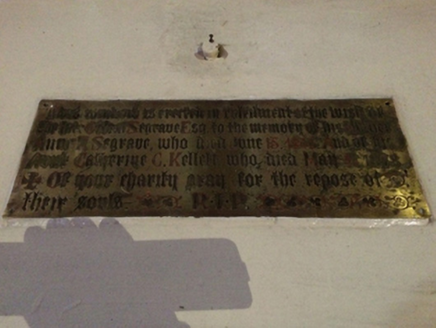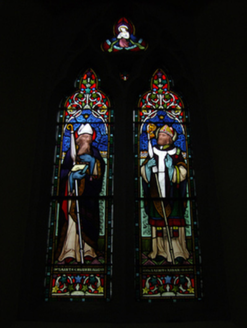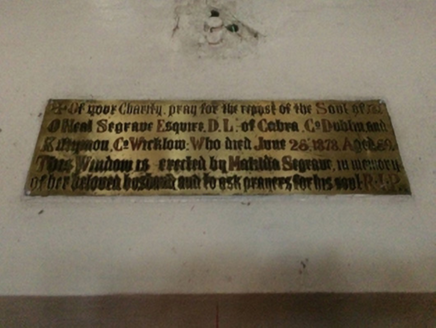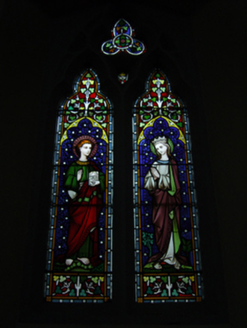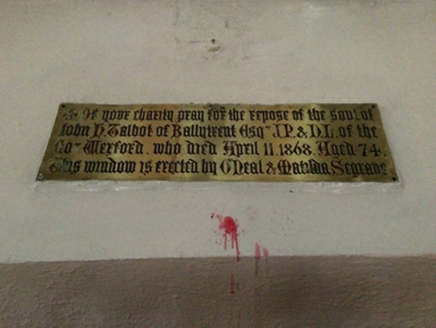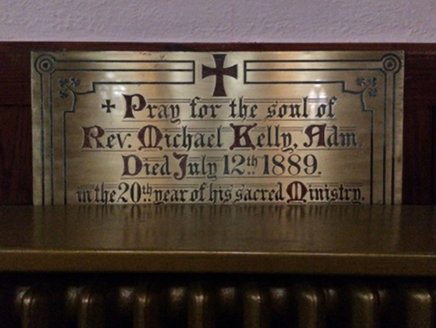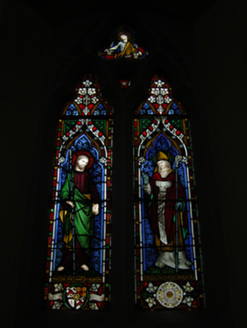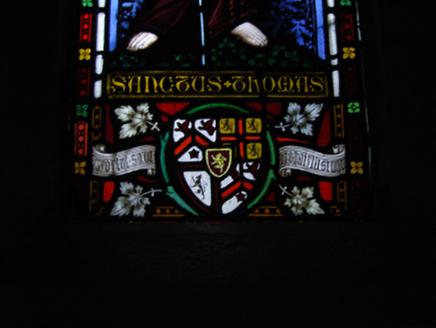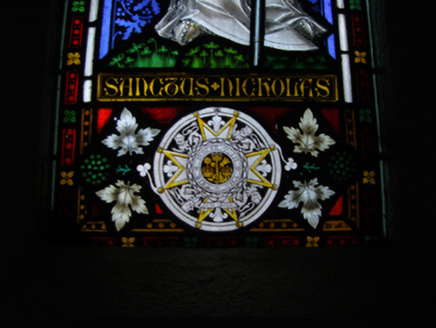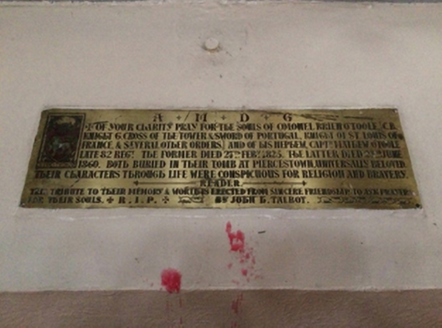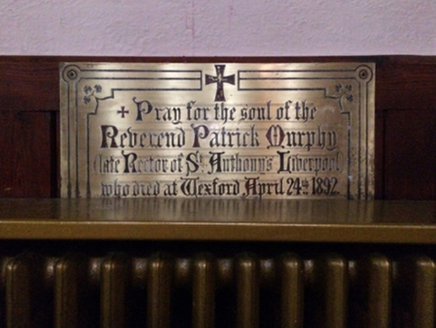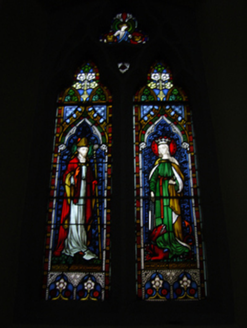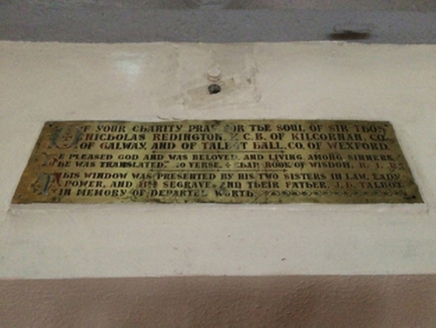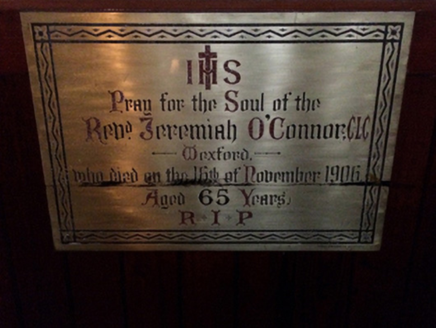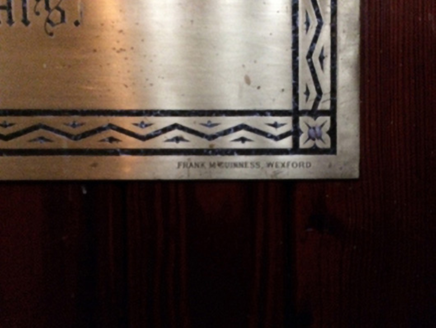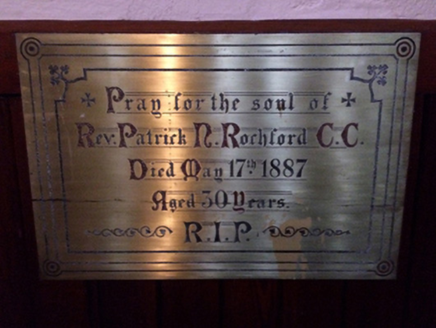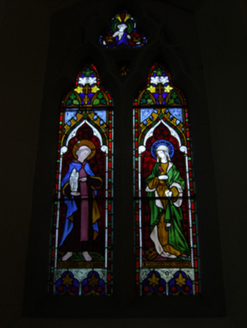Survey Data
Reg No
15502138
Rating
National
Categories of Special Interest
Architectural, Artistic, Historical, Scientific, Social, Technical
Original Use
Church/chapel
In Use As
Church/chapel
Date
1850 - 1860
Coordinates
304750, 121822
Date Recorded
06/07/2005
Date Updated
--/--/--
Description
Detached seven-bay double-height Catholic church, begun 1851; completed 1858; dated 1858, on a rectangular plan comprising seven-bay double-height nave opening into seven-bay single-storey lean-to side aisles; single-bay four-stage tower to entrance (west) front on a square plan supporting broach spire. Renovated, ----, with sanctuary reordered. Pitched slate roof; lean-to slate roofs (side aisles), roll moulded cut-granite ridge tiles, cut-granite coping to gables on trefoil-detailed gabled kneelers with Cross finial to apex (east), and cast-iron rainwater goods on cut-granite eaves retaining cast-iron downpipes. Tuck pointed coursed or snecked "Old Red Sandstone" walls on cut-granite chamfered cushion course on plinth with cut-granite flush quoins to corners; tuck pointed coursed or snecked "Old Red Sandstone" walls (tower) on benchmark-inscribed cut-granite chamfered cushion course on plinth with clasping stepped buttresses to corners having cut-granite "slated" coping. Paired pointed-arch window openings (clerestorey) between cast-iron cruciform tie plates, cut-granite mullions, and cut-granite block-and-start surrounds having chamfered reveals with hood mouldings on monolithic label stops framing fixed-pane fittings having lattice glazing bars. Pointed-arch window openings (side aisles) with cut-granite mullions, and cut-granite block-and-start surrounds having chamfered reveals with hood mouldings on monolithic label stops framing iron mesh storm panels over fixed-pane fittings having leaded stained glass panels. Pointed-arch window opening (east) with cut-granite mullions, and cut-granite block-and-start surround having chamfered reveals with hood moulding on monolithic label stops framing iron mesh storm panels over fixed-pane fittings having leaded stained glass panels. Pointed-arch door opening (tower) with cut-granite step threshold, and cut-granite block-and-start surround having rebated reveals with hood moulding on monolithic label stops framing timber boarded double doors. Pointed-arch window opening (second stage) with cut-granite mullions, and cut-granite block-and-start surround having chamfered reveals with hood moulding on monolithic label stops framing fixed-pane fittings having lattice glazing bars. Pair of lancet openings (third stage) with cut-granite block-and-start surrounds having chamfered reveals framing fixed-pane fittings having lattice glazing bars. Pair of pointed-arch openings (bell stage) between clock faces with cut-granite mullions, and cut-granite block-and-start surrounds having rebated reveals with hood mouldings on monolithic label stops framing louvered fittings. Interior including vestibule (west) retaining tessellated "quarry tile" floor, timber boarded wainscoting supporting chamfered timber dado rail, grouped wall-mounted Gothic-style ledgers, and timber boarded ceiling on chamfered timber beams on cut-granite beaded corbels; pointed-arch door opening into nave with glazed timber panelled double doors having overlight; full-height interior open into roof with arcaded choir gallery (west) on pointed-arch tripartite arcade supporting Gothic-style timber panelled pipe organ (1858), encaustic tiled central aisle between roll topped quatrefoil-detailed timber pews, pointed-arch arcades on cut-granite pillars, exposed pointed-arch braced collared timber roof construction on "Cavetto"-detailed thumbnail beaded corbels with timber boarded ceiling in carved timber frame on carved timber cornice, encaustic tiled cut-veined white marble stepped dais to sanctuary (east) reordered, ----, retaining arcaded communion railings with Gothic-style reredos below stained glass memorial "East Window" (----), encaustic tiled cut-veined white marble stepped daises to side altars with Gothic-style altars below stained glass memorial windows (----), timber boarded wainscoting to side aisles supporting chamfered timber dado rails, Gothic-style timber stations between stained glass memorial windows (1879), Gothic-style timber panelled confessional boxes, polished brass plates (ob. 1885; 1906), and exposed strutted timber roof construction on cut-granite beaded corbels with wind braced timber rafters to ceilings on carved timber cornices. Set in relandscaped grounds on a corner site.
Appraisal
A church erected as one of a pair (see 15505043) to designs by Richard Pierce (1801-54) representing an important component of the built heritage of County Wexford with the architectural value of the composition, one clearly showing the influence of Augustus Welby Northmore Pugin (1812-52) on his former clerk of works (cf. 15700905; 15701428), confirmed by such attributes as the rectilinear plan form, aligned along a liturgically-correct axis; the construction in a ruby-coloured "Old Red Sandstone" offset by silver-grey granite dressings not only demonstrating good quality workmanship, but also producing a lively two-tone palette; the "pointed" profile of the openings underpinning a "medieval" Gothic theme with the chancel defined by an elegant "East Window" modelled "after" Holycross Abbey (founded 1169) in County Tipperary; and the James Joseph McCarthy (1817-82)-designed polygonal broach spire embellishing the tower as a familiar eye-catcher in the landscape. Having been well maintained, the elementary form and massing survive intact together with substantial quantities of the original fabric, both to the exterior and to the arcaded interior reordered (----) in accordance with liturgical reforms sanctioned by the Second Ecumenical Council of the Vatican (1962-5) where a pipe organ supplied (1858) by Telford and Telford (founded 1830) of Dublin; vibrant stained glass; encaustic tile work; a much modified high altar attributed to Henry Lane (----) of Great Brunswick Street [Pearse Street], Dublin (DIA); and the jewel-like Behan Memorial "East Window" supplied by John Hardman and Company (established 1838) of Birmingham, all highlight the considerable artistic potential of the composition: meanwhile, an exposed timber roof construction pinpoints the engineering or technical dexterity of a church making a pleasing visual statement in an urban street scene. NOTE: The plates of the Redington Memorial Window and the O'Toole Memorial Window appear to have been switched with the window to Sir Thomas Nicholas Redington K.C.B. (1815-62) showing "Sanctus Thomas" and "Sanctus Nicholas" and the window to Colonel Brien O'Toole C.B. (d. 1825) showing "Sanctus Laurence O'Toole" and "Sancta Margarita" (Bassett 1885, 87-9).
